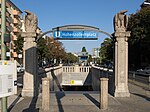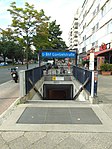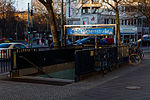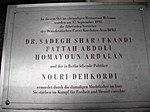Kirche am Hohenzollernplatz
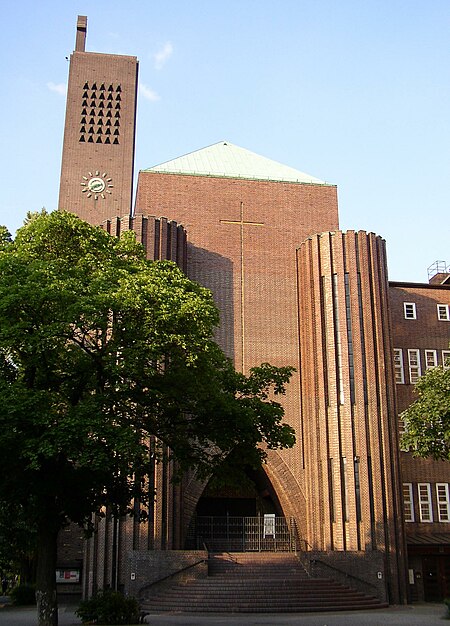
Kirche am Hohenzollernplatz (Church at Hohenzollernplatz ) is the church of the Evangelical Congregation at Hohenzollernplatz, a member of today's Protestant umbrella Evangelical Church of Berlin-Brandenburg-Silesian Upper Lusatia. The church is located on the eastern side of Hohenzollernplatz in the locality of Wilmersdorf, in the Berlin borough of Charlottenburg-Wilmersdorf. The building is considered a leading example of Brick Expressionism and a testimonial to the unique quality of expressionist church architecture in Berlin. The naming of the church after the city square it faces was originally considered a temporary solution until a more suitable one was chosen. The name stuck however, though the debate continues.
Excerpt from the Wikipedia article Kirche am Hohenzollernplatz (License: CC BY-SA 3.0, Authors, Images).Kirche am Hohenzollernplatz
Hohenzollernplatz, Berlin Wilmersdorf
Geographical coordinates (GPS) Address Website External links Nearby Places Show on map
Geographical coordinates (GPS)
| Latitude | Longitude |
|---|---|
| N 52.494143 ° | E 13.326995 ° |
Address
Kirche am Hohenzollernplatz
Hohenzollernplatz
10717 Berlin, Wilmersdorf
Germany
Open on Google Maps
